Features of taiga axes

The taiga ax is a special type of tools, which is significantly different from the familiar carpenter's ax. This tool is quite expensive, but it allows you to survive in the harsh conditions of the taiga. The article will discuss what this ax should be like, how to choose the right model, how to use it.
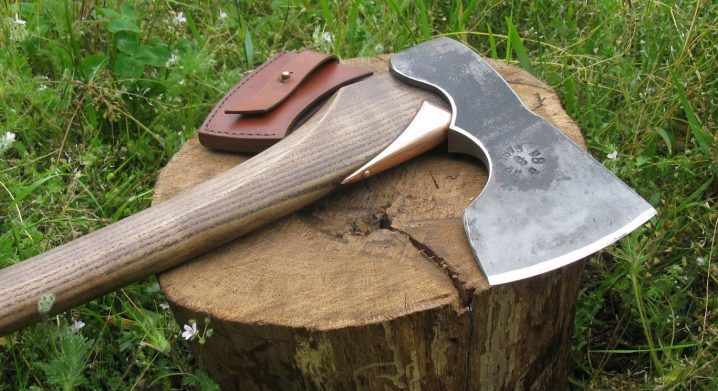
Peculiarities
The taiga ax is used for various tasks.
- Tree felling - This includes the preparation of firewood, sanitary felling, and felling at the sawmill. The taiga ax successfully copes with all these functions.
- Working with large logs - here we mean rough work, for example, delimbing, removing dense bark, making grooves and some other types of work.
- For survival - such a tool can be used by hunters to quickly create kulemoks, as well as traps for wild animals.
- Erection of huts, various decks or "quick-cooking" huts - it is obvious that it is impossible to build a hut without an ax. At the same time, the use of the taiga version allows you to carry out all the necessary work 3-4 times faster than using the carpentry.

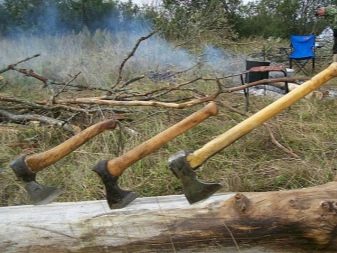
It should be noted that a high-quality ax is needed not only in the taiga. In any other climatic conditions, it will always come in handy for lovers of long hiking trips. This is a truly indispensable device for hunters, fishermen, foresters, geologists, as well as ordinary tourists, and all those who are just planning to go to the taiga.
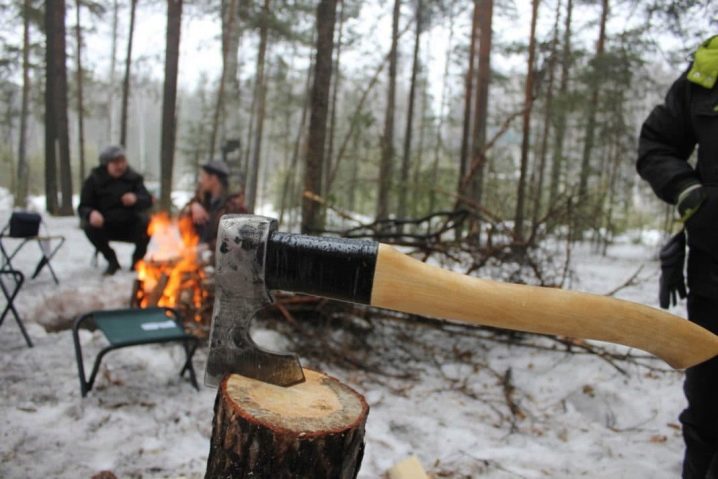
Design
Let us dwell in more detail on the design features of the taiga ax. It includes several details.
- Hatchet - it is quite strikingly different from the carpenter's. In taiga models, it is much longer, because with its help you need to make a strong swing and hit the wood sharply. The standard length is 50 centimeters or more, while it must be light, otherwise you simply cannot survive in the taiga.
- Taiga ax head is also unlike the carpentry, here the upper part of the blade is completely absent. In addition, the head forms a much smaller angle of inclination in relation to the hatchet - 65 degrees compared to 90 degrees for the carpentry version. Thanks to this feature, the efficiency of the work increases, and the hands do not get tired, which generally increases the efficiency of felling. The blow is harder than with a carpentry tool.
- Blade they must be rounded off, sharpening has its own characteristics: as a rule, the trailing edge is 2.5 times thinner than the front. This is extremely important if you plan on using an ax instead of a cleaver.
- Beard - the element connects the ax to the head. It is designed to protect the wooden part from breaking in the event of strong impacts, since it absorbs up to 60% of the force of physical impact.
- Butt - as you know, in the taiga you need not only an ax, but also a hammer, but many use a butt instead, which quite easily copes with all the tasks assigned to it.
- Eye - thanks to this detail, the head is put on the hatchet, a wooden wedge or a simple nail is additionally driven inside, so the head does not jump off.
- Fungus - another detail aimed at increasing the safety of using the device. On the fungus, you can quite conveniently fix your hands so that they do not slip.
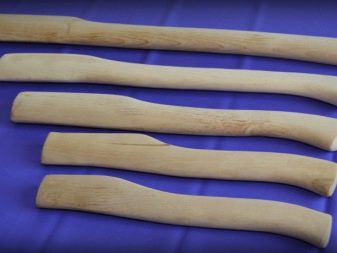
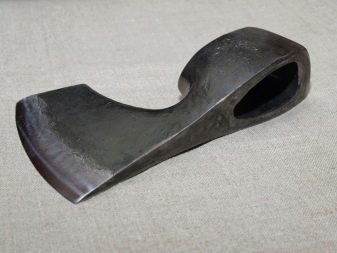
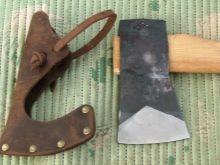
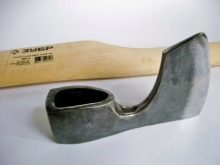
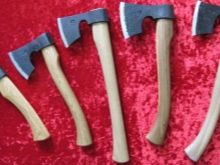
Model rating
Unfortunately, domestically produced axes such as Taiga, Olen and Tiger cannot boast of high quality. Their axes often do not fit under the head and begin to slip almost immediately, which makes working with such a tool very dangerous. According to customer reviews, the blades of the head are so hot that they practically reach the state of cast iron, this leads to their destruction during the first frosts - the blades begin to crumble, or pieces simply break off from them, in any case the tool becomes unusable. To protect themselves, buyers are forced to modify the newly acquired tool on their own, and given that such axes are not cheap, the demand for Russian models is low.
High quality taiga axes were produced in Soviet times during the Stalin era, now the technology has been lost, and products of the 1950s model can only be bought on the Internet, and their cost starts from 4-5 thousand rubles. In those years, steel grade U7 was used.
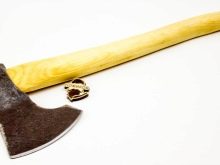

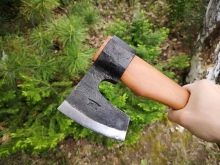
Nowadays, high-quality taiga axes can be bought only from foreign manufacturers. The greatest demand is for products from the brands Gransfors Bruks, Husqvarna, as well as Fiskars and Hultafors.
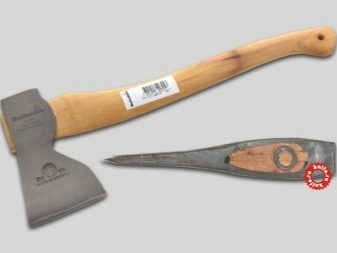
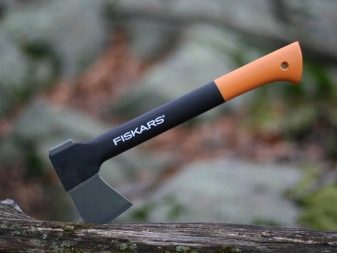
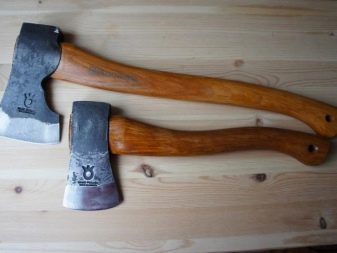
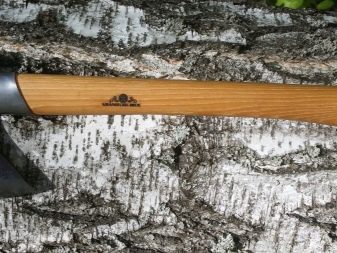
Subtleties of choice
The biggest mistake many who go to the taiga make is when they take a carpenter's ax with them. Such a tool on a shortened handle has a massive head and a rather wide blade, all this significantly weakens the impact force, since wide contact with the wood is required only when it is necessary to cut the tree, and not cut it down.
A shortened handle is also not good, the blow will be much weaker, but this is only the lesser of evils. Short axes are becoming the most common cause of injury in logging - you can hit yourself in the shin or knee while working. In taiga conditions, when there is no opportunity to receive urgent qualified medical care, such situations can end very badly.
Carpentry tools weigh from 2 kg, and the head - 1.4-1.5 kg. The head weight of a taiga ax does not exceed 800 g, it is easier to chop with such a tool.
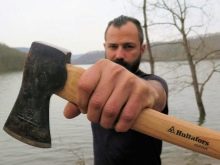
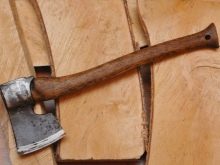
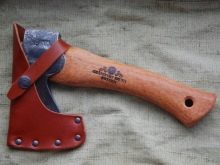
Thus, when choosing a taiga ax, it is important to pay special attention to a few basic points.
- The ax must certainly be light - you will have to carry it on your back and in your hands for several kilometers, and swinging with a lightweight tool is much more convenient than a carpentry half-hammer. In this case, the bulk should be concentrated in the head, that is, in its metal part.
- The minimum length of the hatchet should be approximately 50 cm, optimally 60-70 cm. Only in this case, the swing will allow you to make a more accurate and strong blow.
- However, a handle that is too long will not make the job easier either. If it is 80-90 cm, then it is possible to adapt to such a tool, but the accuracy of the blow will be much lower, and it is not at all convenient to make small undercuts with an elongated handle.
- The blade must certainly have a rounded shape, this is due to the specifics of work in the taiga area. The blade of the ax must be thick enough so that it does not get caught on impact in the wood tissue and not wide enough - otherwise it will be difficult for it to penetrate the tree.
- Another point is the ax head. Unfortunately, over time, all axes begin to loosen, regardless of their cost and manufacturer's brand. Even if you additionally planted them on 3-5 wedges and smeared them with all the superglue at your disposal, they will still fly off, especially if you are cutting wood for several hours a day.
- The flying ax head turns into a sharp, heavy object that can seriously injure others. But even if trouble does not happen, then she can simply drown in deep snow.As practice shows, a sharp thin hatchet enters the snow so that it is almost impossible to find it later.
- That is why it is better to give preference to models with a reverse thrust, when the ax is planted without using a wedge directly from the hand, in this case, with each blow, it will thrust itself even more strongly.
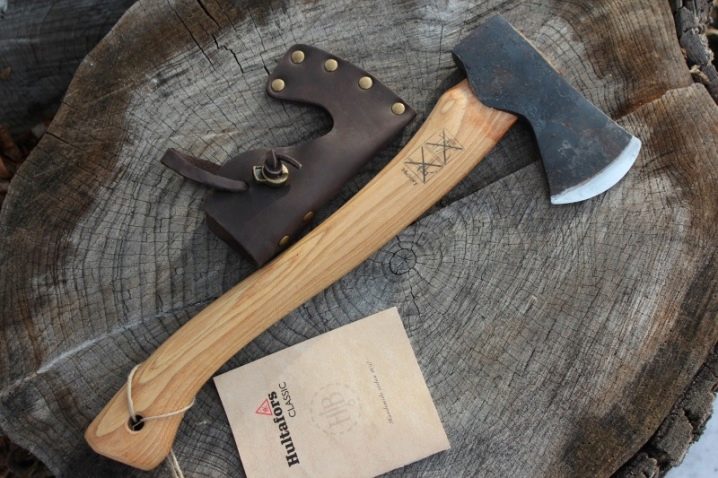
Many are trying to improve their taiga axes, and do the reverse rides on their own. In this case, you need to keep in mind that you will have to tinker with Swedish and American models - they have a rather narrow eyelet, hickory does not grow here, and all other types of wood do not give the desired fit, which is why the large eyelet in domestic models was formed for a reason.
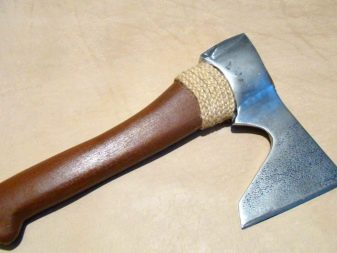
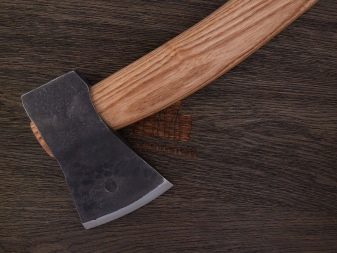
Operation and care
When working with a taiga ax all safety requirements and proper handling of the tool must be observed.
- The blades should always be kept closed, after work they must be dried, otherwise they will rust and become dull, which significantly reduces the cutting efficiency and the useful life of the ax.
- Always remember that axes are not a toy. They can be reliable helpers in difficult survival conditions, but if handled carelessly and frivolously, they cause a lot of trouble to their owners.
- The ax is designed for felling trees - this means that it should not be used for digging the earth and working with materials that can dull it or simply break it.
- The ax must not be thrown into the ground, as this deteriorates and rusts the blade.
- You should not even stick the tool into the fire - this leads to a deterioration in the technical and operational characteristics of steel.

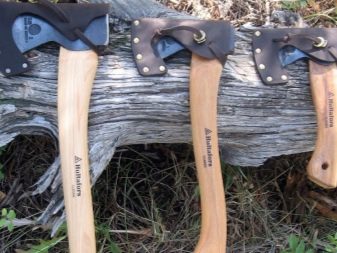
Before you start working with an ax, you need to make sure that it is completely safe and reliable. Make sure that the metal part is securely fixed, does not dangle on the ax, if necessary, you need to strengthen the wedge or install a new one.
It is important to check the sharpness of the blade in advance, there should be no chips or burrs on the plate.
Do not start felling if there are strangers in the work area, especially children.
When swinging hard, hold the ax as tightly as possible, otherwise the tool may slip out of your hand.

For more information on the features of taiga axes, see the video below.



































































The comment was sent successfully.